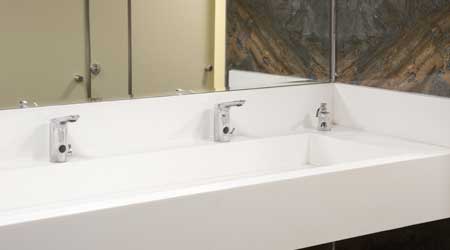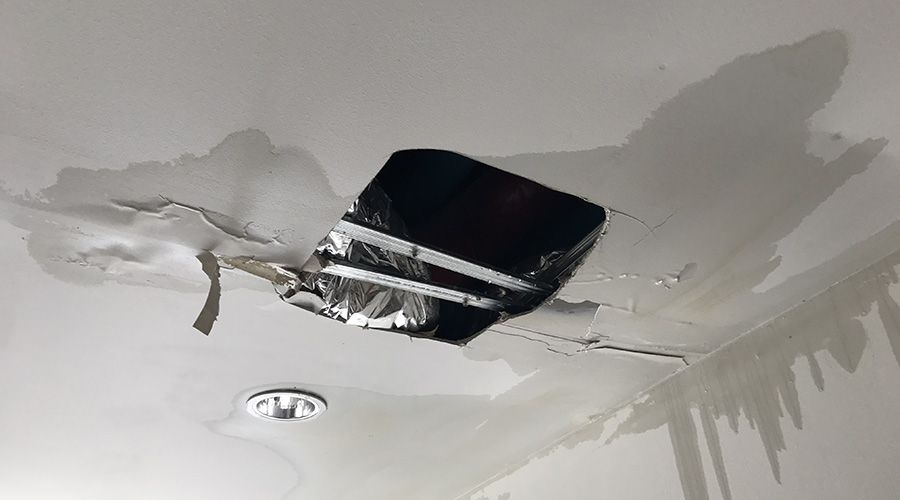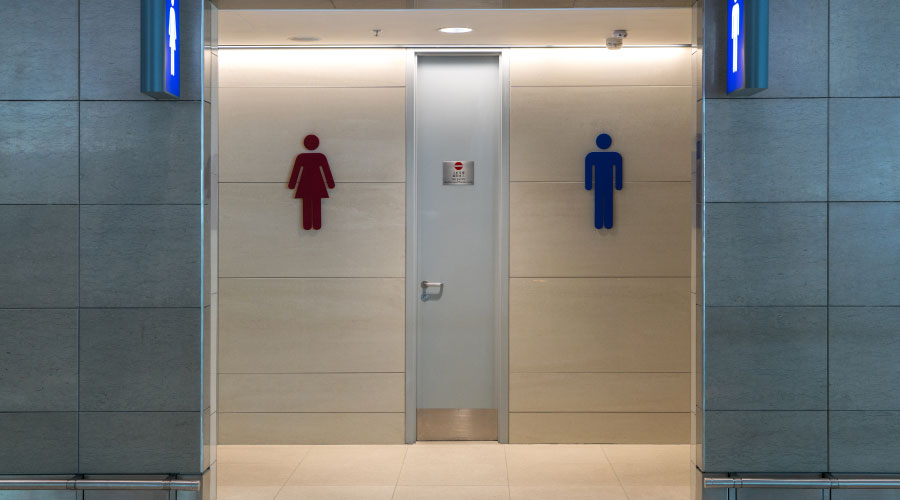3 Considerations for Smartly Designed Restrooms
Here's how to think about lighting, supplies, and high-traffic restrooms.
1. Lighting systems — Poorly designed restroom lighting systems that produce too much light waste energy and are uncomfortable for users. Systems that produce too little light can make the facilities appear dingy and dirty. Most restrooms use two Watts per square foot for lighting. Energy efficient designs can reduce this by 50 percent while improving the quality of the lighting, particularly in those locations where it is most needed.
Restrooms are typically unoccupied 75 to 90 percent of the time, yet the most common practice is to install conventional wall switches. Unfortunately, the switch is rarely used, so the lighting system may operate 24 hours per day, seven days per week, even when the building is unoccupied. The use of automated lighting controls can reduce lighting energy use by as much as 90 percent. Careful placement of the system's sensor, along with installation of a single fixture that is not under automated control, can prevent having the lights turn off while the restroom is occupied.
Fixture selection and placement also will affect long term maintenance costs. Fixtures that are difficult to access or have a design that makes it difficult for maintenance personnel to replace the lamp increase the time required for a simple lamp replacement. For example, installing fluorescent light fixtures with hinged covers over toilet partitions will make it difficult for maintenance personnel to change lamps or to clean the fixtures.
Select the highest efficiency fixtures available. are pretty much the standard today due to their high efficiency. But LED lamps offer even higher efficiencies than T8 and T5 lamps with electronic ballasts, and LEDs offer long service lives that reduce both energy and maintenance costs. What’s more, most LED lamps can be dimmed, allowing the use of daylight dimming systems in restrooms with exterior windows.
2. Restroom supplies — Restroom supplies, like soap and paper products, represent a major cost over the life of a restroom. Start by standardizing throughout the facility on both dispensers and products used. Standardization reduces the number of different items that must be stocked. Materials can be bulk-ordered at reduced rates. Custodial workers won't have to learn how to work with a variety of different systems. And when fixtures wear out or become damaged, stocked replacement units can be readily installed.
Select dispensing units with high capacities to reduce the need for frequent reloading. For paper towels, select sensor-controlled units that can be adjusted to release specific quantities of paper to reduce use and waste. Too much dispensed paper wastes material and contributes to waste buildup in trashcans. Too little and users will dispense additional paper with the same result. Installing large-roll toilet-paper dispensers reduces material costs as well as the cost of restocking.
3. High-traffic restrooms — While planning for the long term is important in any restroom design, it is particularly important in high-use facilities. Products and finishes selected for use must take into consideration the traffic load in these facilities. Those that might do well in a medium-use facility may not hold up in a high-use one, forcing more frequent cleaning cycles or early replacement of components. Remember, the condition of restroom facilities is a direct reflection on the organization to visitors and occupants.
James Piper, PhD, PE, is a writer and consultant who has more than 35 years of experience in facilities management. He is a contributing editor for Building Operating Management.
Related Topics:














